Mark Woodward
Center for the Study of Religion and Conflict
Arizona State University
International Seminar on Religious Values in Preventing and Countering Violent Extremism August 26, 2019
Allied Coordinating Committee of Islamic NGOs Malaysia
International Islamic University Malaysia
In recent years Far-Right Extremism (FRE) has emerged as a terrorist threat at least as significant as Salafi-Wahhabi extremism in Europe. It is far more serious problem in the United States than any form of Islamist Extremism. The US Federal Bureau of Investigation (FBI) reports that of more than one hundred domestic terrorism incidents documented in the United States since October 2018 the vast majority were committed by Right Wing Extremists.[1] The March 15, 2019 attack on mosques in Christchurch New Zealand brought FRE terrorism to global attention in part because it was simulcast on social media. An attack by an Australian terrorist in New Zealand would appear to be a remote incident. On the contrary, it is an example of the globalization of European and North American FRE ideologies. The August 5, 2019 attack on Mexican Americans and immigrants in El Paso Texas, brought the reality of FRE terrorism home to many Americans who had here-to-fore been blinded by denial.
In this paper, I develop a theoretical framework for understanding Euro-American FRE terrorism and the ways in which it resembles Islamist terrorism. I will also be concerned with the psychological processes that lead people to deny or minimize the dangers of terrorist acts committed by groups to which they have strong social and emotional bonds. This comparative framework builds on works by Anna and Sigmund Freud on denial, group formation and leadership, more recent studies of the anthropology and psychology of violence and on classical anthropological theories concerning the cultural logic of nativist and revitalization movements formulated by Ralph Linton and Anthony Wallace. The central thesis of this paper is that while the semantics of FRE and Islamist extremism and mutually exclusive and incompatible, that at a deeper syntactic level they share many common features. This framework can also be used for the analysis of other ethnic and religious extremism including exclusivist Buddhist and Hindu nationalism in Burma (Myanmar) and India.
The Semantics and Syntax of Violent Extremism
Semantics and Syntax are two of the fundamental aspects of language. Semantics is concerned with meaning, symbols and representations. Syntax referrers to the logical and in most cases algebraic structure of sentences. The relationship between the two is the subject of debate in linguistics and as the terms have been widely appropriated across disciplines, increasingly so in computer science. The semantics/syntax distinction can be used heuristically or metaphorically across the social sciences to distinguish between culturally and religiously specific meaning systems and structural principles that obtain across cultures. This is roughly the distinction between cultural anthropology and the humanities and social anthropology and political science. Violent extremism has both sematic features and syntactic structures. Both types of analysis are essential for understanding extremism in general and the cultural and religious forms it takes.
The Semantics of Violent Extremism
The semantics of Far-Right and Islamist extremism make mutually exclusive and incompatible truth claims. They are, however, increasing locked in a pathological co-dependent relationship because they respond to and feed on the each other.[2]
Islamist Extremism
Most, but not all, Islamist ideologies are rooted in the Wahhabi variant of Salafism.[3] Salafism is the revivalist current in Sunni Islam rooted in the teachings of the 14th century Hanbalite jurist Taqi ad-Din Ahmad ibn Taymiyyah. Wahhabism is based on those of the 18th century Arabian reformer Muhammad ibn ʿAbd al-Wahhab. These movement seek to establish what they believe to be Islam as it was practiced by the Prophet Muhammad and his companions as social and in some cases political realities. Salafism requires literal, rather than metaphorical or contextual readings of readings of the Qur’an and Hadith, an idiosyncratic anthropomorphic interpretation of the core theological doctrine of tawhid (the unity Allah) and in most cases stricter enforcement of criminal provisions of Shari’ah than is customary in most Muslim societies. Salafis condemn Sufism (Islamic Mysticism) and most forms of popular Muslim piety as bidah (unacceptable religion innovation) and/or shirk (polytheism). Takfir, declaring professed Muslims to be kafir (unbelievers) is one of the defining characteristics of Wahhabism. Wahhabi ideology excludes other Sunni Muslims, and Muslim minorities including the Shia and Ahmadiyah from the Muslim ummah (community of believers) and this from the protections of Islamic law.
The assertion that Salafism, and/or Islam more generally, is inherently violent is an element of many FRE and other Islamaphobic ideologies. This assertion is, of course, not correct. Salafis differ substantially concerning strategies for establishing the theologically and ritually pure Muslim community they desire. Historically, Wahhabism has been associated with violent conquest and purification efforts.[4] Today it is the only form of Islam that can be legally practiced in Saudi Arabia. All others are subject to sometimes harsh persecution.[5] There are, however, other Salafis who explicitly renounce violence in favor of dakwah (promulgation of Islam) through teaching and preaching. Some I have encountered in Indonesia live in pious isolation from what they believe to be a hopelessly defiled world. The current Saudi version of Wahhabism is politically quietist, teaching that any government that maintains the prayers must be obeyed. Contemporary Salafi-Jihadism emerged from the interaction of radical elements of the Muslim Brotherhood inspired by the writings of Sayyid Qutub who advocated armed struggle against “apostate” regimes and the Saudi dissident al-Sahwa al-Islamiyya (Islamic awakening) movement according to which the Saudi state has departed from the true Salafi path. This movement combines Wahhabi views on religious and social issues with Muslim Brotherhood political activism.
Wahhabism is the religious foundation for violent extremist groups including Al Qaeda, ISIS and the Southeast Asian Jemaah Islamiyah. Some Saudi clerics openly acknowledge this relationship. Sheikh Adel al-Kalbani former Grand Imam of Masjid al-Haram in Mecca stated that: “We follow the same thought [as ISIS] but apply it in a refined way. They draw their ideas from what is written in our own books, from our own principles. We do not criticise the thought on which it (ISIS) is based.”[6]
Far-Right Extremism
Far-Right extremism is more complex than its Islamist cousin. It does not have a single theological or religious reference point. It is a loose amalgamation of racist, white supremacist, anti-immigrant and ethno-nationalist groups each with a particular ideology. FRE ideologies are generally populist, xenophobic and authoritarian.[7] Collectively, they are variations on a theme or what Levi-Strauss called transformation groups in his studies of kinship and mythology.[8] Because it is not grounded in a textual corpus that allows for alternative inclusivist readings, Far-Right Extremism has a greater ideological proclivity for violence than Islamism. The exception is the American Christian Identity movement that relies on idiosyncratic modes of Biblical exegesis to “prove” that only Caucasians of Northern European descent can be truly Christian.[9] There are also significant differences between European and American FRE ideologies. Many American variants, including the Klu Klux Klan, are overtly racist and anti-Catholic.[10] European variants including the French National Rally party and numerous Eastern European groups tend to focus more on ethno-nationalism.
Islamophobia is perhaps more prevalent in Europe than in the United States because of the larger percentage of Muslim immigrants. In the United States, anti-immigrant sentiments now focus primarily on Latin Americans, who, because they are Christians cannot be targeted on the basis of religious criteria alone. There is, however, a long tradition of anti-immigrant sentiment in the United States. The racist, anti-Catholic Native American or Know Nothing party emerged in the mid 19th century as a response to Catholic immigration.[11] Some groups that are now accepted as “genuinely American” including Irish, Italians and Eastern Europeans were demonized as sub-human by earlier Western European Protestant immigrant communities and elements of the political establishment when they came to the United States in the late 19th and early 20th centuries. They became “white” as they entered the political mainstream.[12] Chinese and other East Asians are now regarded as “model immigrants” but Japanese Americans were defined as enemy aliens forced into relocation camps during the Second World War. Asian and African Americans do not have the option of becoming white. Discriminatory laws restricting immigration from Asia, Southern and Eastern Russia were not fully repealed until 1965.
Far-Right Extremists are divided about Jews, Judaism and Zionism. Neo-Nazis in both Europe and the United States are virulently anti-Semitic.[13] Other Far-Right Extremists are Christian Zionists. This is an apocalyptic version of Christianity awaiting the immanent second coming of Jesus. They believe that he will not return until a Greater Israel is established, the al-Aqsa mosque is demolished and Biblical Jewish rituals are conducted in a restored temple to be built on its foundations. Christian Zionists are closely associated with extremist Jewish religious groups in Israel and element of the Republican party in the United States.[14]
Great Replacement theories are the most rapidly expanding Far-Right extremist ideologies in Europe and the United States. They declare that “white civilization” in Europe and the United States is at risk of being overwhelmed by floods, tsunami, storms, swarms, hordes, stampedes or avalanches of criminal immigrants described variously as rapists, drug dealers and vermin.[15] Replacement Theory originated in France in the 1970s and have recently been popularized in the works of French white nationalist Renaud Camus who works in French and English circulate widely on social media. His theories inspired the recent FRE terrorist attacks in New Zealand and Texas.
European and American versions of differ only with respect to the immigrant populations they fear and detest. In the United States Latin Americans are the targets of choice. European Replacement theories combine anti-immigrant sentiments with the idea that there is an eternal war between Christianity and Islam, that continues the struggle between the Byzantine and Ottoman Empires, the Crusades and later conflicts between the Ottomans and Hapsburgs in Southeastern Europe. Other variants of this ideology were spread throughout Europe by Roman Catholic and Orthodox volunteers who fought on the Serbian side in the Balkan wars of the 1990s. [16]
The Syntax of Violent Extremism
Comparative analysis of extremist ideologies could be extended across a wide range of cases. Such efforts can lead to generalization concerning the lexical items and symbols used to describe enemy others including “invaders” and “kafir.” It is also necessary to explore the extremist syntax to understand the psychological and social processes involved in group formation and the designation of other groups as existential threats. This mode of analysis helps to located the analysis of violent extremism in more general social science research. Hopefully it also provides insight into reversing the world’s drift into warring ethno-religious-nationalist camps.
Insights from Sigmund Freud’s Group Psychology and the Analysis of the Ego and Civilization and its Discontents concerning the psycho-dynamics of group formation and leadership are valuable for understanding the formation of extremist groups and answering questions about why otherwise reasonable people are attracted to them and believe to firmly in the irrational claims they make about outsiders.[17] Adorno’s Freudian analysis of fascist propaganda provides additional insight into the formation and maintenance of extremist movements. One need not subscribe to his more general psychoanalytic theories concerning the primacy of sexuality and early childhood experiences as drivers for the development of personality and culture — and I do not, to appreciate the importance of these insights and apply them in contexts other than those Freud could have anticipated.[18] From the perspectives of anthropology and political science Freud’s analyses are theoretical propositions useful to the extent that they aid in the explanation of observed phenomena. Studies of nativistic and revitalization movements by Linton and Wallace were based on ethnographic research conducted in small scale societies in colonial conditions. Linton and Wallace were both associated with the culture and personality school of cultural anthropology that also included Margret Mead, Ruth Benedict, Gregory Bateson and Melford Spiro. This school was critical of, but in conversation with Freud’s psychoanalytic theories of culture.[19] Wallace acknowledges an intellectual debt to Freud’s Group Psychology in his discussion of leadership and group formation in revitalization movements. All of these sources were written more than half a century ago and require updating on the basis of subsequent research to be used to the fullest extent possible.
Sigmund Freud — The Psycho-Social Construction of Extremist Identities
Adorno suggests that Freud’s turn to the analysis of social phenomena in the 1920’s was at least in part a response to the unsettled social and political conditions in post-World War I and that he developed a theoretical framework usual for the analysis of fascism and other modes of authoritarianism that emerged from them.[20] Freud was in poor health by the time the Nazi’s occupied Vienna in 1938. He actually wrote very little about fascism other than a few sarcastic remarks, one them when he learned of Nazi book burnings in 1933: “What progress we are making! In the Middle Ages, they would have burnt me; nowadays they are content with burning my books.” Freud was most likely wrong on this point, if the Nazis could have caught him, they probably would have burned him.
In his analysis of what was at the time called group psychology Freud stressed the importance of the what he called the libido or the “pleasure principle,” narcissism (a pathological form of extreme self-admiration), and the contrast between beloved in group and despised out group. Portions of his analyses anticipated later developments in cultural anthropology and the psychology of violence. Many of its short comings derive from his limited knowledge of societies and cultures other than his own. His analysis is none the less insightful, especially when augmented with findings from more recent research.
These were, and remain fundamental issues in the social sciences. Freud addressed them from the perspective of interacting egos, while his contemporary Durkheim and most other sociologists and anthropologists assume the primacy of the group. Freud was particularly concerned with sociologically “unnatural” groups that are not defined on the basis of ethnicity, kinship or class. He includes religions and armies in this category. This makes his analysis particularly well suited for the analysis of social movements, political parties and extremist organization.
Freud sought to identify the psychological basis for hierarchical and horizontal social solidarity. He speculated that:
If individuals in the group are combined into a unity there must surely be something to unite them and this just might be precisely the thing that is characteristic of the group.
Identification, a psychological process that blurs perceived boundaries between self and other is critical for his analysis. Freud considered it to be the earliest and most basic human bond. It is a narcissistic process of devouring in which makes the beloved object part of oneself. It defines the group and transforms libido into the hierarchical bond between leaders and followers. It also establishes the egalitarian bond between followers of a common leader.
We see that the object is being treated in the same way as our own ego, so that we are when we are in love a considerable amount of narcissistic libido over flows on the object. It is even obvious, in many forms of love choice, that the object serves as a substitute for some unattainable ego ideal of our own. We love it on account of the type of perfection which we have striven to reach for own our ego and which we should now like to produce in a roundabout way as a means of satisfying our narcissism.
Identification is what later scholars refer to as identity fusion, the process through which personal and collective identities are merged. Swann and his colleagues define identity fusion as: a visceral sense of “oneness” with a group and its individual members that motivates personally costly, pro-group behaviors. [21] Like Freud they are critical of Le Bon’s concept of the group mind or crowd mentality. They argue that identity fusion does not diminish personal agency as it enhances group solidarity. Rather, under conditions of identity fusion, personal agency motivates pro-group action.[22] While Freud stresses identification with the leader, identity fusion scholars tend to emphasis core group values. These are complimentary perspectives. Both are operative in extremist groups. Wahhabi-Salafi extremists stress loyalty to an ideology and to core Islamic texts and to absent leaders including Osama bin Laden, ISIS Caliph Abu Bakr al-Baghdadi and Indonesian extremist leader Abu Bakr Ba’asyir. Contemporary Far-Right extremists are more inclined to find common ground in shared values and ideologies such as the “Great Replacement” than in devotion to charismatic leaders although Neo-Nazis continue to revere Adolf Hitler, an even more absent leader.
For Freud, a group is:
A number of individuals who have substitutes one and the same object for their ego ideal and have consequently identified themselves with one another in their ego.
Leaders combine features of the authoritarian “primal father” and the equally authoritarian Nietzschian Ubermench or Superman. The Ubermench is the ultimate narcissist who demands love, but loves no one. In either case:
The individual gives up his one ego ideal and substitutes it for the group ideal as embodied in the leader.
Here at the beginning of the history of mankind was the Superman who Nietzsche only expected from the future. Even today the members of the group stand in need of the illusion that they are equally loved by their leader but the leader himself need love no one else, he may be of a masterly nature, absolutely narcissistic, but self-confident and independent.
An image of the Ubermensch or in this case Uberfrau (Super Woman) is that of the Elven Queen Galadriel when Frodo offers her the One Ring. She reflects on the possibility and says:
And now at last it comes. You will give me the Ring freely! In the place of the Dark Lord you will set up a Queen. And I shall not be dark, but beautiful and terrible as the Morning and the Night! Fair as the Sea and the Sun and the Snow upon the Mountain! Dreadful as the Storm and the Lightening! Stronger than the foundations of the earth. All shall love me and despair![23]
In both cases individual narcissism is merged with that of the leader. Because this is a trait shared by group members the result is a form of collective narcissism. Freud stresses the importance of an actual leader, but allows for the possibility that a symbolic mandatory can take his place. Expanding on this idea it is reasonable to suggest that a party or ideology may be the focus of identification. The collective narcissism characteristic of groups is the root of antipathy for their competitors. It may also be a factor contributing to intolerance and a justification for violence. For Freud religions are exceptional cases because widely shared doctrines of universal love can mitigate inter-group hostility.
a religion, even if it calls itself a religion of love, must be hard and unloving to those who do not belong to it. Fundamentally indeed, every religion in this way is a religion of love for all those whom it embraces while cruelty and intolerance towards those who do not belong to it are natural tendencies.…… If another group tie takes the place of the religious one, then there will be the same intolerance towards outsiders as in the age of the Wars of Religion.
Freud develops framework to explain what he considers to be natural hostility between groups defined on the basis of these criteria in In Civilization and its Discontents.
In the undisguised antipathies and aversions which people feel towards strangers with whom they have to do, we may recognize the expression of self-love – of narcissism. This self-love works for the self-assertion of the individual and behaves as though the occurrence of any divergence from his own particular line of development involved a criticism of them and a demand for their alteration.
Ardono takes this line of argument a step further, asserting recognition of difference and boundaries can lead to rage against the other and persistent refusal to engage in critical self-reflection and violence. These same narcissistic tendencies, however, contribute to in group solidarity. Freud explains.
But the whole of this intolerance vanishes, temporarily or permanently as the result of the formation of a group, or in a group. So long as group formation is present or so far as it extends individuals behave as though they were uniform, tolerate other people’s peculiarities, put themselves on an equal level with them and have no feeling of aversion towards them. Such a limitation of narcissism can, according to our theoretical views, only be produced by one factor, a libidinal tie with other people.
Here Freud anticipates what Victor Turner would call “communitas” an egalitarian social condition and mode of social solidarity marked by the abrogation of hierarchy and role differentiation. Freud overestimates the degree of communitas that is present in most social groups. Turner shows that communitas is most often little more than a moment in time. It is a universal component of rites of passage and pilgrimages rituals. It can also be found at critical points in what he describes as social dramas. There are moments of spontaneous communitas at festivals, concerts and sports events and in conflict situations including demonstrations/riots, wars are revolutions. Institutionalized communitas is characteristic of religious orders and other world renouncing groups.[24] A more limited form of communitas exists in extremist groups defined on the basis of opposition to and hatred of outsiders in ways that Freud suggests. While it is rarely taken to the extreme that it is in monastic orders, there is a sense of unity and equality in the sense that group members are “comrades in arms” in a collective struggle against a detested other. While social structure and difference are rarely abrogated in the ways that it is in ritual, or in moments of spontaneous communitas, differences are minimized. The New Zealand FRE terrorist put it this way in his manifesto:
From Where Great Leaders Arise
The men and women needed by a society in crisis are created by a greater societal group thought, they arise from their environment, from their folk, seeming springing forth from the people as if they were waiting for the moment. They are not so much born as made to be what is needed of them by the greater group thought occurring around them. These leaders will be paragon examples of your people, virtuous, incorruptible, speaking truth to power and a truth that resonates with your very soul.
WHEN YOU SEE THEM; WHEN YOU HEAR THEM; YOU WILL KNOW THEM, AS THEY ARE YOU, AND YOURS.
This declaration reverses the causal arrow in Freud’s equation. Here the collective ego/identity/consciousness of the extremist group is projected onto a leader, who has yet to emerge and who hopefully never will. The statements “resonates with your soul” and the terrorist’s concluding statement are, however, clear examples of the leader/follower relationship he described. Reversing the direction of the transformative process does not alter the nature of the emergent identity relationship.
Freud’s unstated conclusion is that inter-group conflict is inevitable. He is overly pessimistic because he did not recognize the existence or significance of identity and group hierarchies that offer the potential for finding common ground. Far-Right and Islamist extremism are rooted in religion and ethnicity. Both are critical components of hierarchically structured personal and collective identities and can be used as the basis for group formation in the ways that Freud describes.[25] Contemporary research has shown that ethnic and religious boundaries are not as rigid as he suggests. Ethnic and religious categories are reference systems for organizing difference. They are malleable, with symbolic boundaries reflecting shifting power relations.[26] Categorical systems generally take the form of nested hierarchies with ever more inclusive categories at higher nodes. These hierarchies as well as definitions of their constituent elements are situational, being subject to restructuring in variant interactional, social and political contexts.[27] These lexical categories do not necessarily correspond with the distribution of cultural and religious traits, beliefs and practices. Rather, there are socially constructed assumptions that individuals and communities to who these labels apply share common characteristics. They range in scale and inclusiveness from personal to global. For example, the term Muslim can refer to an individual, a local community or in its most inclusive sense to a global community. The same is true of ethnicity. The term Turk, for example, can be used at multiple levels of inclusivity ranging from subnational groups to a global community with a shared history and speaking related, but mutually unintelligible languages.
The level of inclusivity may either contract or expand, especially at critical historical junctures where there is a pressing need for reformulating social and political structures. Leaders can play vitally important roles in these processes by encouraging and admonishing their followers to expand or contract in group boundaries. Shifts in relationships between the Indonesian Muslims Nahdlatul Ulama (NU) and Muhammadiyah in the late 20th and early 21st century provide an example of this process. NU and Muhammadiyah are Indonesia’s largest and most influential Muslim organizations. NU is a traditionalist, Sufi oriented movement. Muhammadiyah is a modernist organization based largely on Salafi teachings. For much of the 20th century they were bitter enemies often exchanging takfir – each accusing the other of being outside the Muslim community. Hostility and mutual recrimination began to decrease at the end of the 20th century for three reasons. The first was that leaders of both groups were deeply committed to the Reformasi (reformation) movement that led to the 1998 democratic transition. The second is that the leadership of both organizations strongly opposes Saudi Arabian style Wahhabism and Islamist extremism that became increasingly influential at that time. The third is shared commitment to Indonesian nationalism rooted in the non-confessional monotheism of Pancasila the national ideology.
Two leaders with a shared commitment to nationalism and religious pluralism, former NU Chairman and Indonesian president Abdurrahman Wahid (Gus Dur) and former Muhammadiyah Chairman Buya Syafii Maarif played critical roles in this rapprochement. They shared religious commitments to an inclusive understanding of Islam, the political principle of religious and to defining extremists, rather than rather than each other as opponents. It was their status as leaders that enabled them to transform inter-Islamic relations, move from the historical takfir centered discourse to one defining NU/Muhammadiyah relationships as “completion in goodness.” The type of oppositional relationship Freud described gave way a cooperative relationship rooted in a higher order religious identity.
Nativist and Revitalization Movements
Nativist and Revitalization movements are sub-cases of the groups described by Freud. They are social and religious responses to colonialism that began to emerge among indigenous people in the late 19th century. They seek to preserve or reinvigorate local cultures or in the most extreme cases to destroy society as it is currently formulated it and build the world anew. Research concerning these movements has been conducted primarily by anthropologists and has focused on small scale indigenous societies. There are numerous examples, the most well-known are the American Indian Ghost Dance movement of the 1890s and Melanesian Cargo Cults. [28] While they were written more than half a century ago, studies by the American anthropologists Ralph Linton and Anthony Wallace are still the most significant attempts to theorize these movements in comparative ways. In 1943 Linton noted that the study of these movements was of more than “purely academic interest.” Wallace, whose active research career spanned more than six decades, noted that this analytic framework could be profitably employed in the analysis of social movements and revolutions in post-colonial states. He specifically mentioned the Iranian Revolution of 1979 as an example of a state level revitalization movement.[29]
Linton and Wallace developed models that can illuminate significant features of extremist movements and locate their analysis within a broader social science context. This can help to alleviate the problem of “terrorism studies” becoming a theoretically ill-informed echo-chamber.[30]
Linton defines nativistic movements as: “conscious, organized attempt(s) on the part of societies members to revive or perpetuate selected aspects of its culture.” He develops a classification system based a pair of binary distinctions between magical(religious)/ rational and revivalistic/perpetuative movements. The interaction of these variables produces a four-cell classification system:
- revivalistic-magical/religious
- revivalistic-rational
- perpetuative-magical/religious
- perpetuative-rational
Linton notes that these distinctions are absolute and indicates that the should be understood as continuous and not discrete variables. Many, perhaps most, nativistic movements include both magical/religious and rational elements. He also notes that magical/religious movements are most likely to develop in conditions of actual or perceived stress. In nearly every case certain elements are culture are selected for emphasis and accorded great symbolic value. These are or become what Ortner calls “key symbols” that are central to identity contraction and boundary definition. [31] As such, they must be defended, by force if the movement is so inclined. It would be necessary to include an additional violent/not violent variable to the model to capture this distinction. While the need for this variable may not have been apparent when Linton constructed the model, it is now.
Salafi Islamist extremist movements are by definition revivalist/magical religious. Far-Right extremist movements are more difficult to characterize. Great Replacement Theory models tend towards rationality but can be either perpetuative or revivalist depending on how the plan to respond to “invaders.” Those who would only establish more restrictive, basically racist and/or Islamaphobic immigration policies are perpetuative. The New Zealand and Texas terrorists are revivalist because they seek to eliminate invaders. Those who call for massive deportation are non-violent revivalist rationalists. Again, an additional violent/nonviolent variable is necessary to capture this distinction.
The revitalization movements Wallace describes are special cases of the magical/religious revivalistic movements in Linton’s model. Most are violent to some degree because the seek to destroy culture as it is currently constituted. He defines them as follows:
A revitalization movement is defined as a deliberation, organized, conscious effort by members of a society to construct a more satisfying culture. Revitalization is thus, from a cultural standpoint, a special kind of cultural change phenomena: the persons involved in the process of revitalization must perceive their culture, or some major areas of it, as a system (whether accurately or not); they must feel that this cultural system is unsatisfactory; and they must innovate not merely discrete items but a new cultural system, specifying, new relationships as well as, in some cases; new traits.
Wallace understands revitalization movements as macro-level historical processes that are common in societies of all scales. He mentions New Guinea cargo cults and the development of world religions including Christianity and Islam, the French and Russian revolutions as examples. He recognizes a distinction between secular and religious movements, but from a functional perspective does not view them as being fundamentally different.
Wallace was concerned not so much with developing a taxonomy of revitalization as with arriving at generalizations about the revitalization process. In this respect, his analytic agenda is similar to Turner’s account of the social dramas.[32] The difference is that social dramas are located within cultural systems and revitalization movements transform or replace them.
He develops a model included five “somewhat overlapping” stages.
1) Steady State; 2) Period of Individual Stress; 3) Period of Cultural Distortion; 4) Period of Revitalization; 5) New Steady State.
Charismatic leaders, who Wallace refers to as prophets, with characteristics similar to those described by Freud, are essential players in the revitalization process because they offer a vision of the new, stage 5, cultural order. The prophet/follower relationship is also similar to that Freud propose. Wallace approaches the study of revitalization movements with the neutrality characteristic of scientific anthropology. He did not make moral judgements, at least in his capacity as an analyst, though he had great affinity for American Indian people. Because it is based on generalization from a large number cases his model is a useful tool for predicting what course a nascent revitalization movement will take.
Contemporary Far-Right and Islamist extremist movements are located in the intersection of stages 3 and 4. They are at a point where members are engaged in a struggle against the established order (stage 1) and in some instances, have a vision of what the new order (stage 5) might be. For a time, ISIS came close to realizing stage 5 in the territory it controlled. Ultimately, it suffered the same fate as Nazi Germany a state level secular revitalization movement.
The three models described in this section and the sematic approach to the analysis of violent extremism described previously should be understood as complimentary. Each offers a measure of insight into the varieties of extremism and its social and other psychological features. None of them are totalizing methods or theories. There are other factors contributing to the emergence of violent extremism that require a separate treatment. Chief among these are nature of the real and perceived grievances that are establish the conditions under which intolerant ideologies are manifest as violent action.
Violent Extremism and the Psychology of Denial
There is a tendency, especially in the United States, to underestimate the threat posed by Far-Right Extremism and to regard FRE terrorists as psychotic “lone wolfs,” despite a lack of empirical evidence indicating links between terrorism, mass shootings and mental illness.[33] There is a related tendency for some Muslims do deny that terrorist acts could have be perpetrated by other Muslims. It is reasonable to suggest that claims that terrorists, especially FRE terrorists, are deranged, as US President Trump has done, is denial, a psychological defense mechanism first described by psychoanalyst Anna Freud in 1937.[34] The fact that President Trump attributes attacks by “white” Americans to mental illness and attacks by Muslim to Islamic ideologies is further evidence that he suffers from denial.[35] Denial is a pathological condition that is used unconsciously to reduce anxiety and emotional conflict. People suffering from this condition genuinely believe that traumatic events and life threating conditions do not exist, or in less severe cases minimizes their significance and potential negative consequences. It is also reasonable to suggest that that Muslims who genuinely believe that the 9-11 attacks in the United States were orchestrated by a CIA/Israeli/Zionist conspiracy suffer from this same condition.[36]
The concept of denial is used routinely in studies and treatment of addiction, abusive relationships and responses to life-threatening medical conditions. Therapists have described hierarchies of denial at increasing levels of severity. I have adopted one of these developed by Nottingham Therapy in the United Kingdom to characterize levels of extremism denial.
Level 1 Denial – Information Deficit
- Do not know there is a problem with FRE or Islamist terrorism.
- Incorrect information about the cause of the problem.
Level 2 Denial – Conscious Defensiveness
- Knows that there is a problem but refuses to accept the emotional pain that comes from knowing. people from one’s own community are responsible.
- Search for “alternative facts” including conspiracy theories.
Level 3 Denial – Unconscious Defensiveness
- Evasion and distortion of facts to guard against emotional pain from self-awareness.
- This is often an unconscious process.
Level 4 Denial – Delusion
- Clings to irrational beliefs and theories despite overwhelming evidence to the contrary.
- These are often phrased as non-falsifiable propositions.
The higher the level of denial, the more difficult it is to overcome. There are frequent references to collective denial, especially in discussions of attempts to avoid recognition of the reality of climate change. The concept of collective denial has not, however, been sufficiently theorized and is used primarily in a metaphoric sense. Three points are, however, reasonably clear. The first is that as Anna Freud observed: “When an error becomes collective, it acquires the strength of truth.” People who live in echo chambers where fiction is presented as fact and fact described as “fake news” will come to confuse the two. The second is, that as quantitative studies of climate change denial have shown, there is a strong statistical relationship between collective denial and authority.[37] When leaders speak to their followers from positions of denial, it becomes pervasive because of the psycho-dynamics of the leader/follower relationship. The fact that there are legal, non-violent far right political parties and social movements in many countries tends to diminish the stigma of far-right extremism. Examples of mainstream or near mainstream FRE groups include the English Defense League (United Kingdom), The League (Italy), Alternative for Deutschland (Germany), National Rally (France), Freedom Party (Austria), Freedom Party (Netherlands), Golden Dawn (Greece), Afrikaner Weerstandsbeweging (South Africa), The 1389 Movement (Serbia) and the Alt-Right in the United States. There have been efforts, including one by former US national security advisor Steve Bannon, to bring these groups together under the banner of global populism. The social and psycho dynamics of group formation can contribute to the development of denial as an element of collective identity. The same can be said of Islamic movements such as Hizbut Tahrir that endorse the goals, but not the methods of violent Islamists.[38] The third is that the emotional pain that knowledge that a group member has committed an horrific act of violence in the name of a group to which one has strong emotions is very real. It can be as real as the pain of domestic abuse. Because it is so strongly rooted in merged collective and personal identities it is not clear what form a strategy for overcoming collective denial might take. One thing is clear. As Freud observed in his comments on religious violence: “However difficult we find it personally, we ought not to reproach believers too severely on this account …” If collective denial of extremist violence is itself a psycho-social pathology, our task is to search for cures and vaccines. Condemning individual or groups for being afflicted with denial can only move it to a higher level.
[1] Jones S. (2018) The Rise of Far-Right Extremism in the United States, Washington DC: Center for Strategic and International Studies.
[2] Ebner, J. (2017) The Rage: The Vicious Cycle of Islamist and Far-Right Extremism, London: Bloomsbury Press.
[3] The Indonesia Islamic Defenders Front (FPI) is an exception. It does not endorse Salafism and is rooted in an exclusivist understanding of traditional Sunni Islam.
[4] Algar, H. (2002) Wahhabism: A Critical Essay. New York: Islamic Publication International.
[5] Commins, D. (2009) The Wahhabi Mission and Saudi Arabia, London: I. B. Taurus, 2009.
[6] Middle East Eye (2016) https://www.middleeasteye.net/news/leading-saudi-cleric-says-and-saudi-arabia-follow-same-thought
[7] Harrison, S. and Bruter, B. (2011) Mapping Extreme Right Ideology: An Empirical Geography of the European Extreme Right, London: Palgrave Macmillan.
[8] Lévi-Strauss, (1967) Structural Anthropology New York: Basic Books; (1969) The Elementary Structures of Kinship, Boston: Beacon Press; (1988) The Jealous Potter. Chicago: University of Chicago Press.
[9] Barkun, M. (1994) Religion and the Racist Right: The origins of the Christian Identity Movement, Charlottesville: University of North Carolina Press.
[10] Chalmers, D. (1987) Hooded Americanism The History of the Ku Klux Klan, Durham: University of North Carolina Press.
[11] Levine, B. (2001) “Conservatism, Nativism, and Slavery: Thomas R. Whitney and the Origins of the Know-nothing Party” Journal of American History.
[12] Guglielmo, M. and Salerno, S. (2003) Are Italians White? How Race is Made in America. New York: Routledge.
[13] Lee, M. (2105) The Beast Reawakens: Fascism’s Resurgence from Hitler’s Spymasters to Today’s Neo-Nazi Groups and Right-Wing Extremists, London: Routledge.
[14] Adrovandi, C, (2014) Apocalyptic Movements in Contemporary Politics: Christian and Jewish Zionism, New York: Palgrave Macmillan.
[15] Polakow-Suransky, B. and Wildman, S. (2019) “The Inspiration for Terrorism in New Zealand Comes from France,” Foreign Policy; Schwartzburg, R. (2019) The ‘White Replacement Theory’ Motivates Alt-Right Killers the World Over, The Guardian.
[16] McCants, W. (2015) The Believer: How an Introvert with a Passion for Religion and Soccer became Abu Bakr al-Baghdadi, Leader of the Islamic State, Washington DC: Brookings Institution; Bangstad, A. (2014) Anders Breivik and the Rise of Islamophobia, London: Zed Books.
[17] Freud, S. (1922) Group Psychology and the Analysis of the Ego, London and Vienna: International Psycho-Analytical Press; (1975/1930) Civilization and Its Discontents, New York: Norton.
[18] One of the most important findings of the culture and personality school of cultural anthropology that acknowledged an intellectual debt to Freud was that many of this assumptions about early childhood experience were not cross-culturally valid. On this point see: Hsu, F. (1952). Anthropology or Psychiatry: A Definition of Objectives and Their Implications. Southwestern Journal of Anthropology,
[19] Hsu, op. cit.
[20] Adorno, T. (1951) Freudian Theory and the Pattern of Fascist Propaganda. https://cominsitu.files.wordpress.com/2018/01/theodor-w-adorno-freudian-theory-and-the-pattern-of-fascist-propaganda-5.pdf
[21] Swann, W., Jetten, J., Gómez, A., Whitehouse, H. and Bastian, B. (2012). When Group Membership Gets Personal: A Theory of Identity Fusion, Psychological Review.
[22] Le Bon, G. (1947/1895) The Crowd: A Study of the Popular Mind, London, London: Ernest Benn.
[23] Tolkien, J. The Fellowship of the Ring, Book 11, Chapter 7: The Mirror of Galadriel.
[24] Turner, V. (1969) The Ritual Process: Structure and Anti-Structure, Chicago: Aldine, (1980) Dramas, Fields and Metaphors: Symbolic Action in Human Society. Ithaca: Cornell University Press.
[25] Snow, D. (2001) Collective Identity and Expressive Forms, International Encyclopaedia of the Social and Behavior Sciences, New York: Elsever Science. Wimberley, D. (1989). Religion and Role-Identity: A Structural Symbolic Interactionist Conceptualization of Religiosity. The Sociological Quarterly, Burke, P. and Stets, J. (2009) Identity Theory. New York: Oxford University Press; Deaux, K. (1993) Reconstructing Social Identity, Personality and Social Psychology Bulletin.
[26] Barth, F. (1969) Ethnic Groups and Boundaries: The Social Organization of Cultural Difference. London: Allen & Unwin Eriksen, T. and Jakoubek, M. (2108) Ethnic Groups and Boundaries Today: A Legacy of Fifty Years. New York: Taylor and Francis; Leach, E. (1954) Political Systems of Highland Burma, Cambridge: Cambridge University Press; Lehman, F. (1967) Ethnic Categories in Burma and the Theory of Social Systems, In: Kunstadter, P. (ed.) Southeast Asian Tribes, Minorities, and Nations, Princeton: Princeton University Press University Press; Fitzgerald, T. (ed.) Religion and Politics in International Relations, London: Bloomsbury.
[27] Evans Pritchard, E. (1940) The Nuer: A Description of the Modes of Livelihood and Political Institutions of a Nilotic People, Oxford: Clarendon Press; Keyes, C. (1981) The Dialectic of Ethnic Change. In: Ethnic Change, Keyes, C., (ed.) Seattle: University of Washington Press; Gladney, D. (1996) Relational Alternity: Constructing Dungan (Hui), Uygur and Kazakh Identities across China, Central Asia and Turkey, History and Anthropology.
[28] Lindstrom, L. (1993). Cargo Cult: Strange Stories of Desire from Melanesia and Beyond. Honolulu: University of Hawaii Press; Osterreich, S. (1991) The American Indian Ghost Dance, 1870 and 1890. New York: Greenwood Press,
[29] Wallace, F. (1990) Recurrent Themes in Social Movements, Current Contents.
[30] Wallace, A. (1956) Revitalization Movements, American Anthropologist, Linton, R. (1943) Nativistic Movements, American Anthropologist.
[31] Ortner, S. (1973) On Key Symbols, American Anthropologist
[32] Turner, op.cit.
[33] Hlavinka, E. (2019) “Mass Shootings and Mental Illness: A Teaching Moment,” MedPage Today; McCauley, C. and Moskalenko, S. (2014) Toward a Profile of Lone Wolf Terrorists: What Moves an Individual from Radical Opinion to Radical Action, Terrorism and Political Violence.
[34] Freud, A. (1937). The Ego and the Mechanisms of Defence, London: Hogarth Press and Institute of Psycho-Analysis.
[35] Blake, A. (2019) Trump Often Blames Mass Shootings on Mental Health. When the Perpetrator is Muslim, He Blames Islam, Washington Post, August 6, 2019
[36] There are other Muslims and Christians who ground what might appear to be, but is not, denial in theological reasoning. Here the argument is that a person who is genuinely a Muslim or Christian could not have acted so terribly. My mother is a Christian example. Her thought is that a true Christian could not be a terrorist but that there are terrorists who claim to be Christians.
[37] Hornsey, M. (2016) Meta-analyses of the Determinants and Outcomes of Belief in Climate Change, Nature.
[38] Ahmed, H. and Stuart, H. (2009) Hizb ut-Tahrir: Ideology and Strategy, London: Center for Social Cohesion.

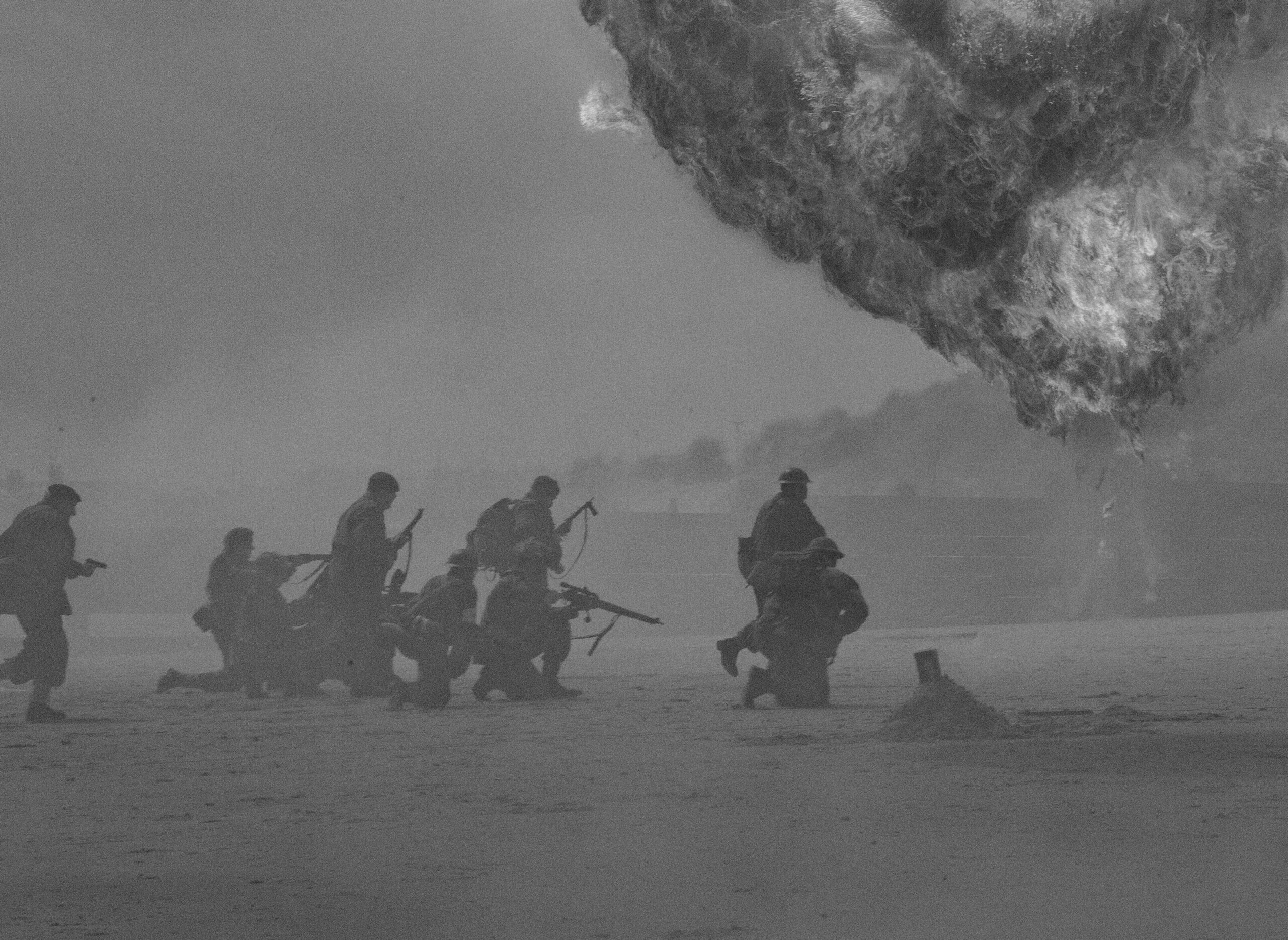





 Users Today : 0
Users Today : 0 Total views : 8440
Total views : 8440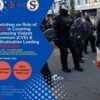
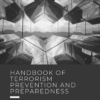

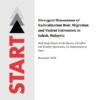
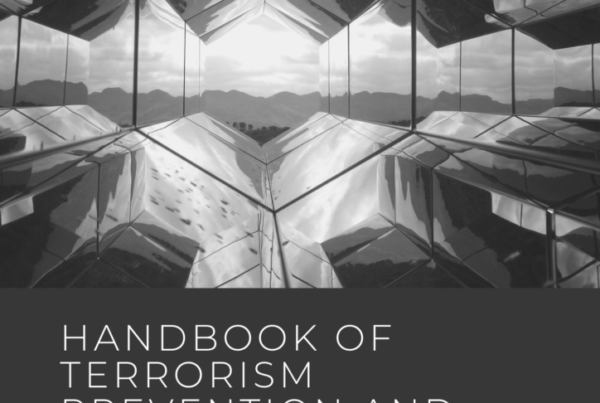
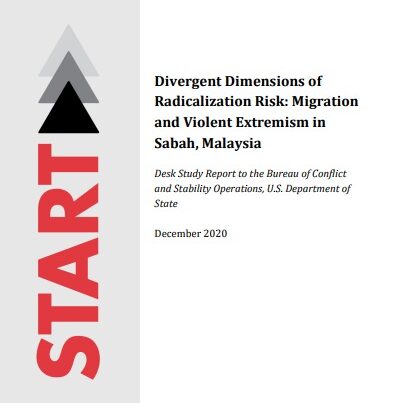
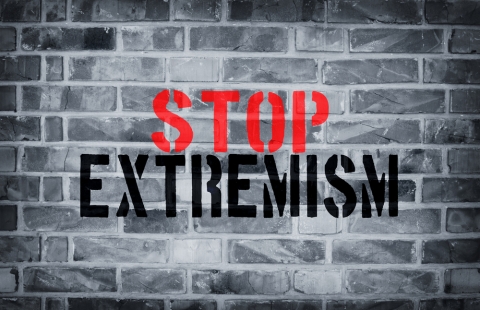
Recent Comments